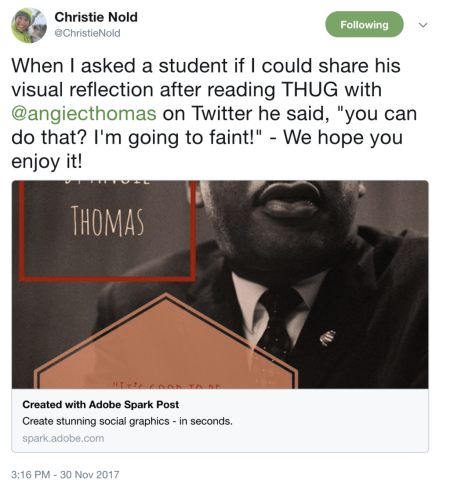How soon is now?
 Looking for opportunities to make real-world connections or bring an authentic audience to your students? Typically, a public presentation at the end of a project or unit provides this space for students to share with a wider audience.
Looking for opportunities to make real-world connections or bring an authentic audience to your students? Typically, a public presentation at the end of a project or unit provides this space for students to share with a wider audience.
But authentic audiences can be found at any stage of the work.
In the beginning
Sometimes, a need or problem in the community can be a great catalyst for students to engage in community-based service-learning. At Burke Town School, students invited community partners in as a kickoff event for projects.

Those partners presented real-world needs facing the Burke community, providing outlets for students to plug their project work into. These type of initial conversations can help students envision the authentic impact their work could have on their own community.
In the middle:
Making local connections provides a boost of relevance anytime during a course of study.
Community partners can provide expert input or offer an opportunity to partner with students in exploring an idea or phenomena. It’s always the right time to connect community members to learning.
For instance:
- At Manchester Elementary Middle School, 6th graders undertook research to determine whether their town should bid to host the next Olympics. As they delved into their research, the students brought in Manchester VT town manager to explain some of the considerations in holding a large-scale event in their town.
- At the Dorset School, students interested in constructing chicken coops determined that a visit to a local farm would help them better understand the constraints of the problem.
Another great authentic audience for students is their peers.
Engaging students in peer reflection and evaluation and be powerful. As teachers lead students in skill development around metacognitive skills, such as self-direction and collaboration, engaging peers as assessment partners offers students a chance to think together with a peer about who they are as learners, and how to improve the quality of their work.
This was an integral part of Dorset’s chicken coop design process: students presented the schematics of their design concepts to their peers. This allowed for both the authentic audience piece and for students to develop the critical skill of providing rigorous but fair feedback.

At the end
Culminating presentations or performances are still an excellent way to connect students with an authentic audience. And there are myriad forms this can take: the grand opening of a student-created public art exhibit, a taste-testing of produce from the school garden, or a pop-up museum where students present artifacts representing journeys and migration.
Anytime
Technology creates many opportunities for students to share their work.
E-portfolio sites like Protean and Seesaw allow students to document evidence of their work and receive feedback from teachers as well as the most important audience to them: their peers.
Twitter and Facebook can connect students with parents, other classrooms, or even authors!

Any stage of your project can offer an engaging audience to enrich students.
How and when are you connecting your students with an authentic audience?
